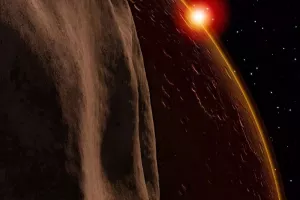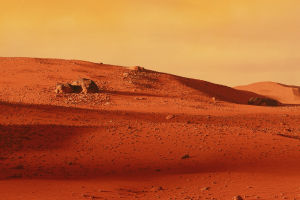There is so much about space, our solar system, and the galaxy that we still don't know! Space is vast. With billions of galaxies and stars, and planets in our own solar system yet to be fully explored or understood, scientists' knowledge of space is always evolving. There are, however, some really cool things we know about space right now!
1. Sunsets on Mars are blue
The Curiosity Mars rover's first color photograph of a sunset in 2015 revealed a surprising twist — sunsets on Mars are blue. NASA said this is because "dust in the Martian atmosphere has fine particles that permit blue light to penetrate the atmosphere more efficiently than longer-wavelength colors" like yellow, orange, and red.
2. The Apollo astronauts' footprints on the moon will probably stay there for at least 100 million years
Since the moon doesn't have an atmosphere, there's no wind or water to erode or wash away the Apollo astronauts' mark on the moon. That means their footprints, roverprints, spaceship prints, and discarded materials will stay preserved on the moon for a very long time. They won't stay on there forever, though. The moon still a dynamic environment. It's actually being constantly bombarded with "micrometeorites," which means that erosion is still happening on the moon, just very slowly.
3. THERE ARE MORE STARS IN THE UNIVERSE THAN GRAINS OF SANDS ON EARTH
The universe extends far beyond our own galaxy, The Milky Way, which is why scientists can only estimate how many stars are in space. However, scientists estimate the universe contains approximately 1,000,000,000,000,000,000,000,000 stars, or a septillion. While no one can actually count every single grain of sand on the earth, the estimated total from researchers at the University of Hawaii, is somewhere around seven quintillion, five hundred quadrillion grains. That is an awfully big sand castle!
4. Space is full of "space junk."
Space is full of junk like used rocket parts and dead satellites. These objects continue to orbit Earth at about 17,500 mph — 10 times as fast as a speeding bullet. The Space Surveillance Network (SSN) keeps track of how much debris is out there and who's responsible for it. The SSN is currently tracking around 23,000 objects larger than a softball. Space junk is dangerous because one collision could trigger a chain reaction of objects hitting each other, resulting in a thick cloud of debris that would make space travel extremely dangerous. This kind of disaster was the premise of the 2013 movie "Gravity" starring Sandra Bullock and George Clooney.
5. More energy from the sun hits Earth every hour than the planet uses in a year
The use of solar energy has increased at a rate of 20 percent each year for the past 15 years. According to Yale Environment 360, the world added 30 percent more solar energy capacity in 2017, meaning that 98.9 gigawatts of solar energy was produced that year. Despite seemingly large number, this amount of energy only accounts for 0.7 percent of the world's annual electricity usage.

